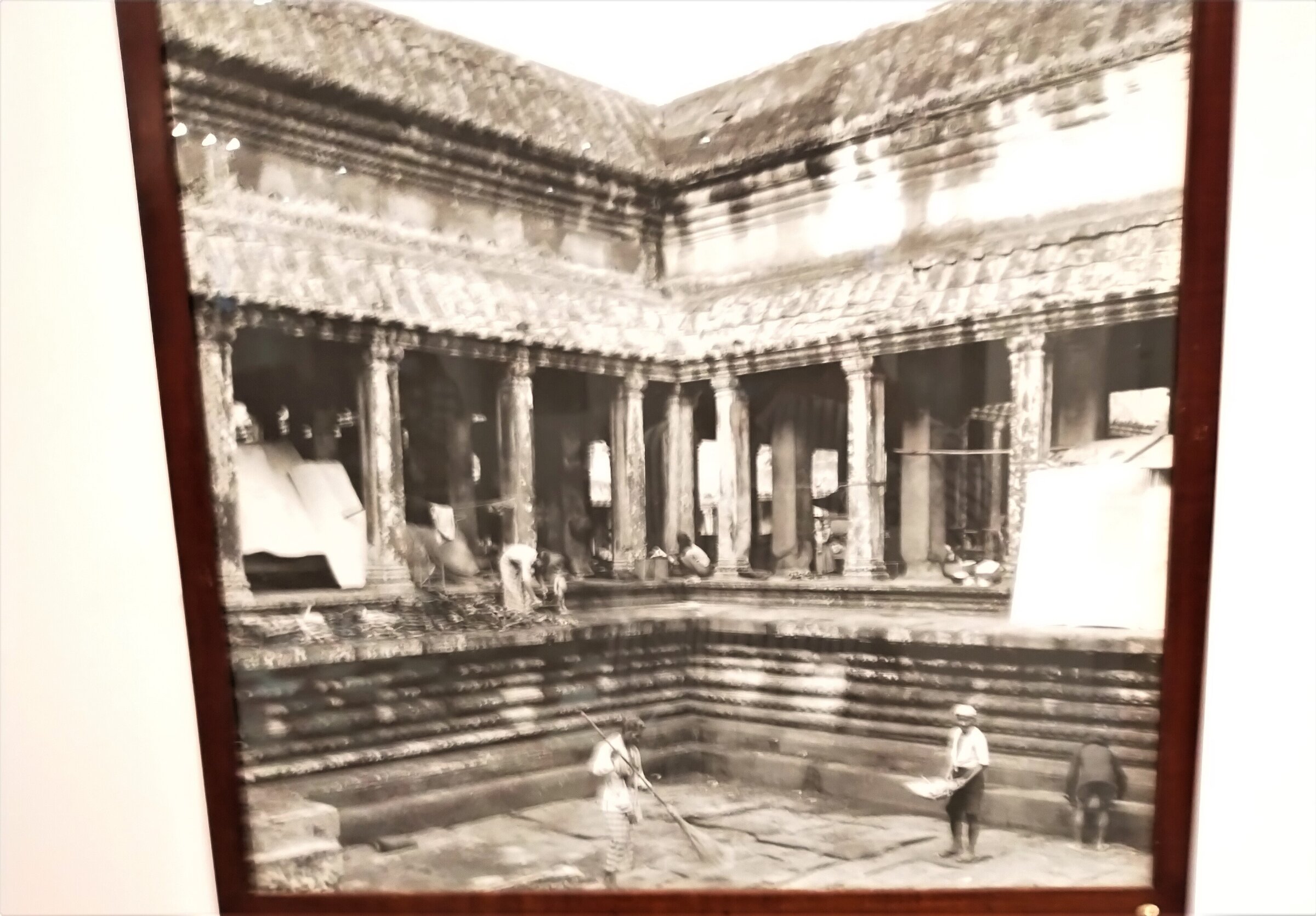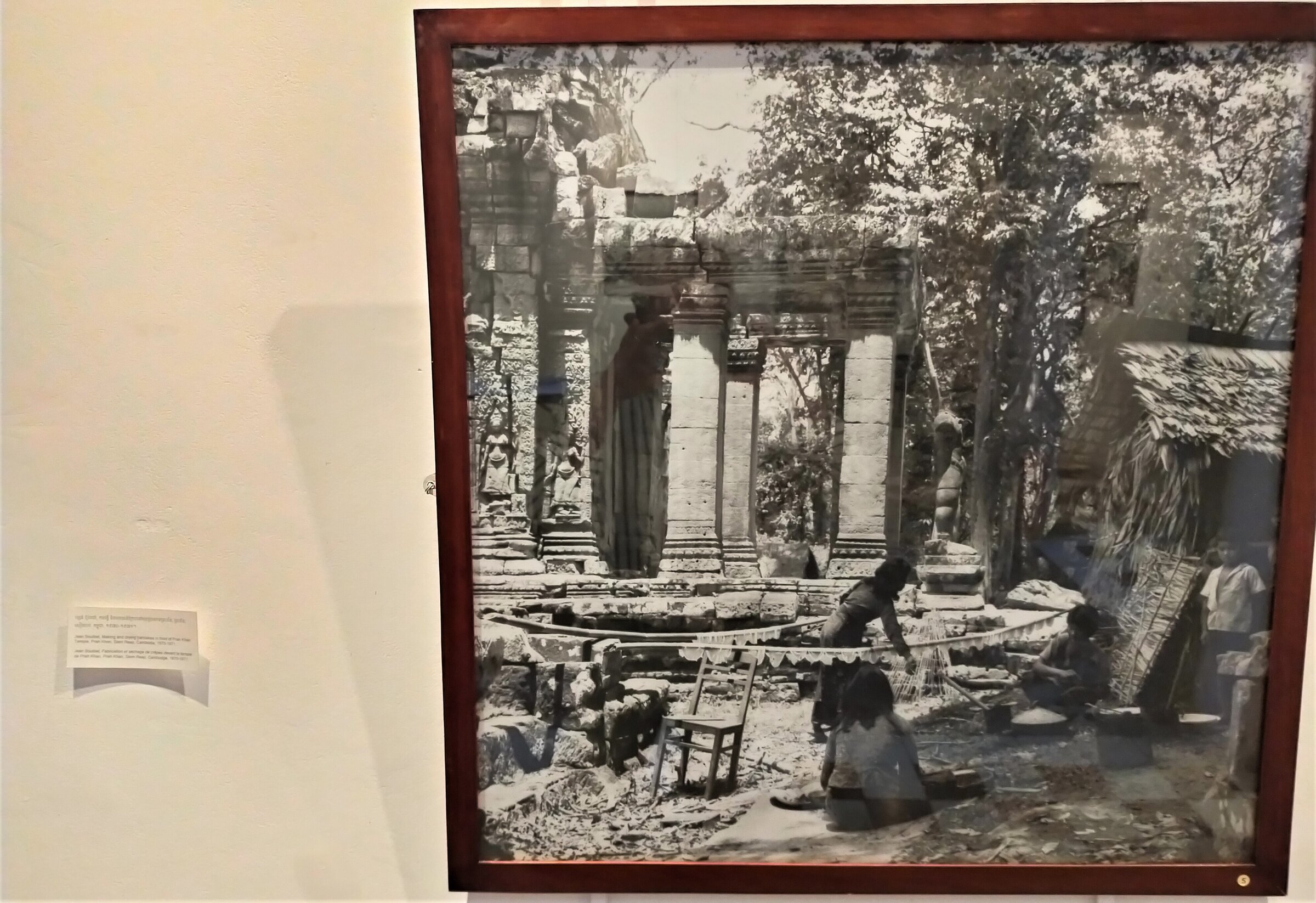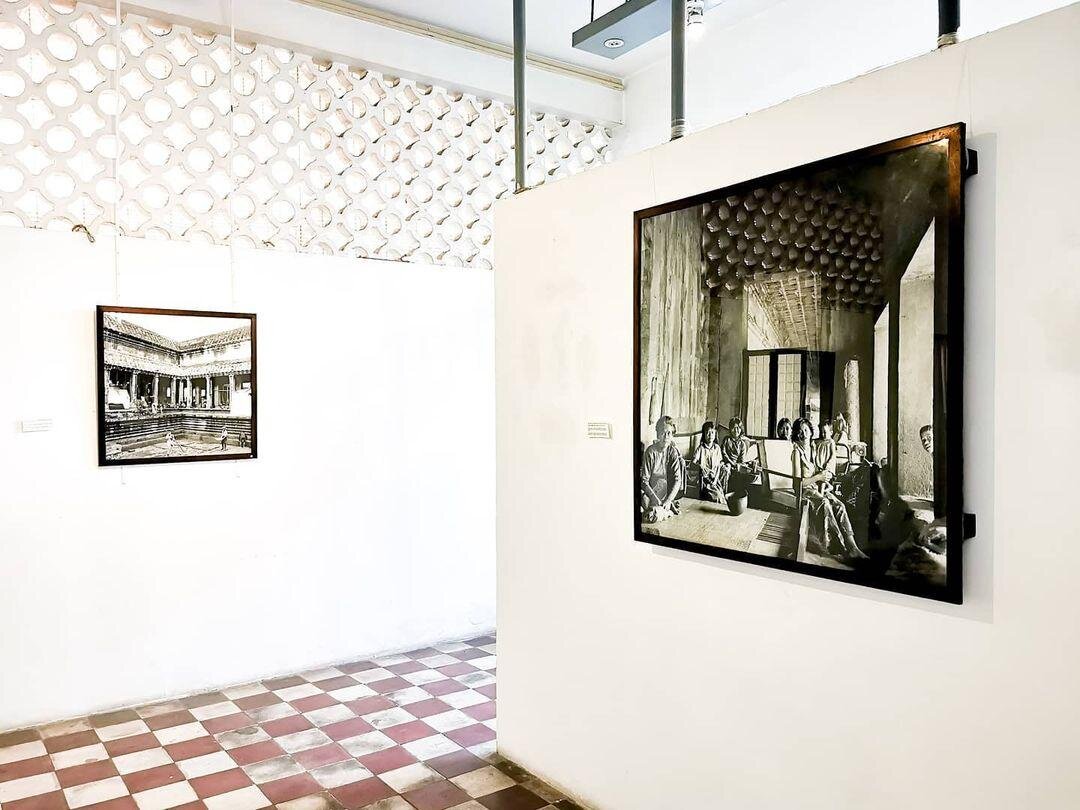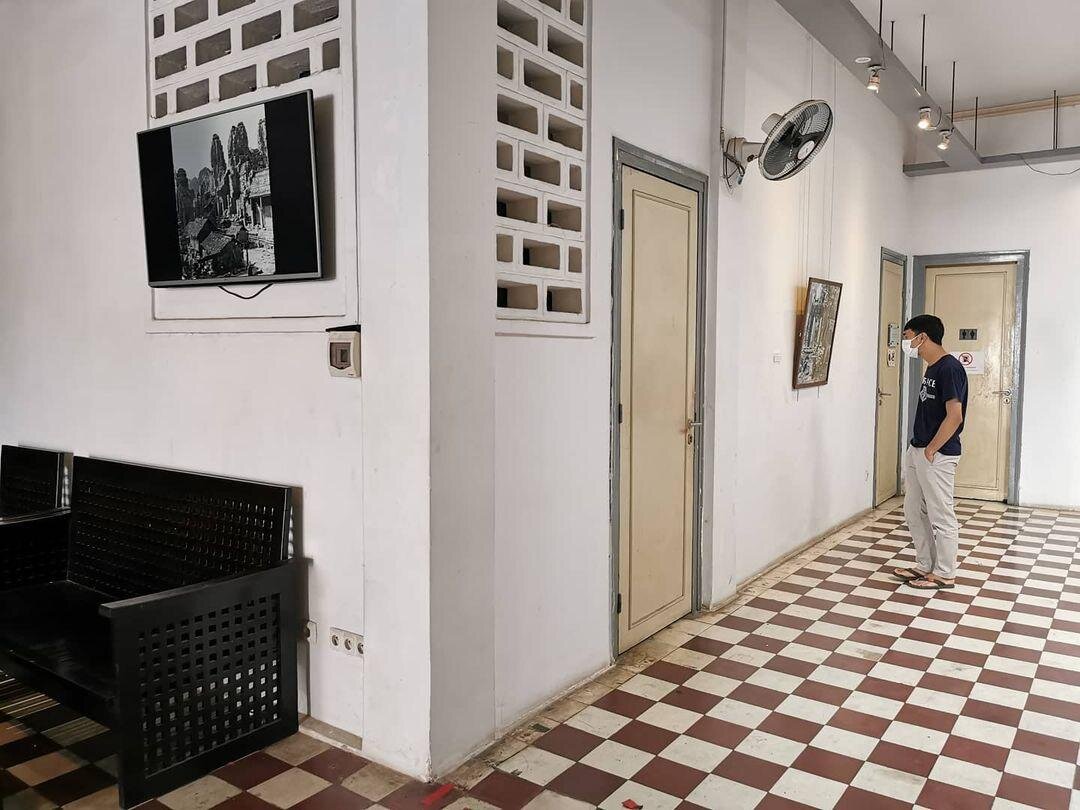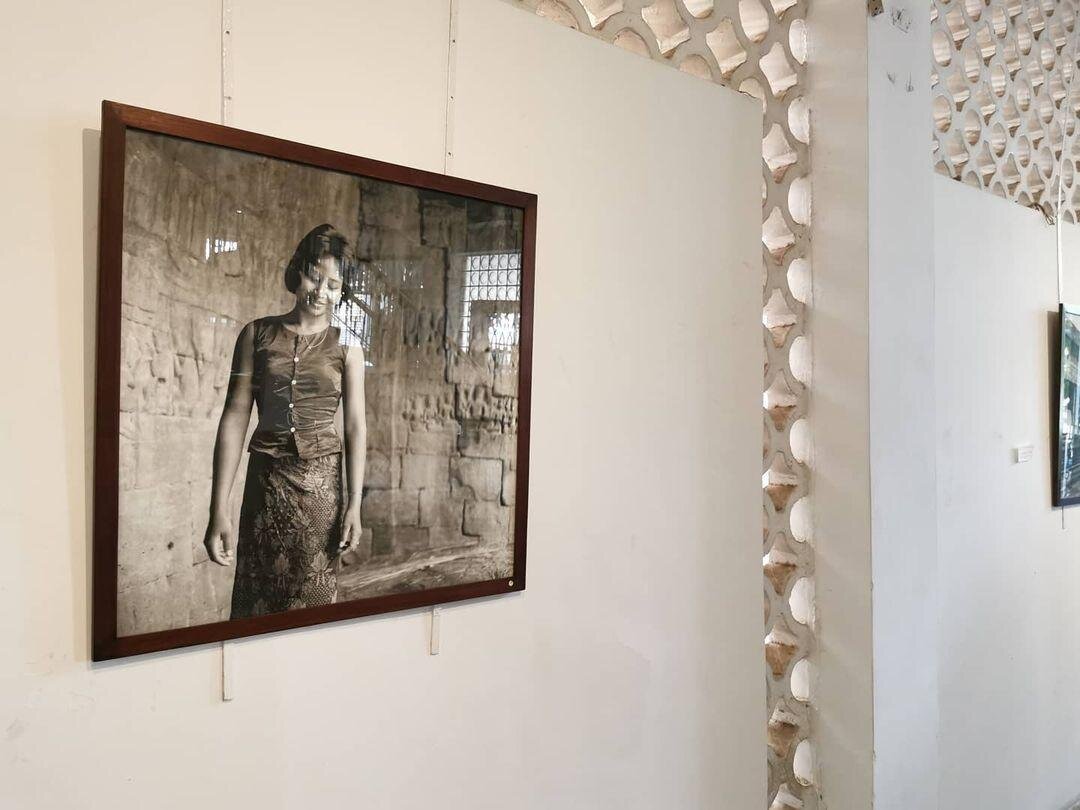Visions of Angkor by...Jean Boulbet
by Jean Boulbet
When war refugees became the temple keepers...7 of the 37 Jean Boulbet's photographs kept at Bophana Center were exhibited in Jan.-Feb. 2021.
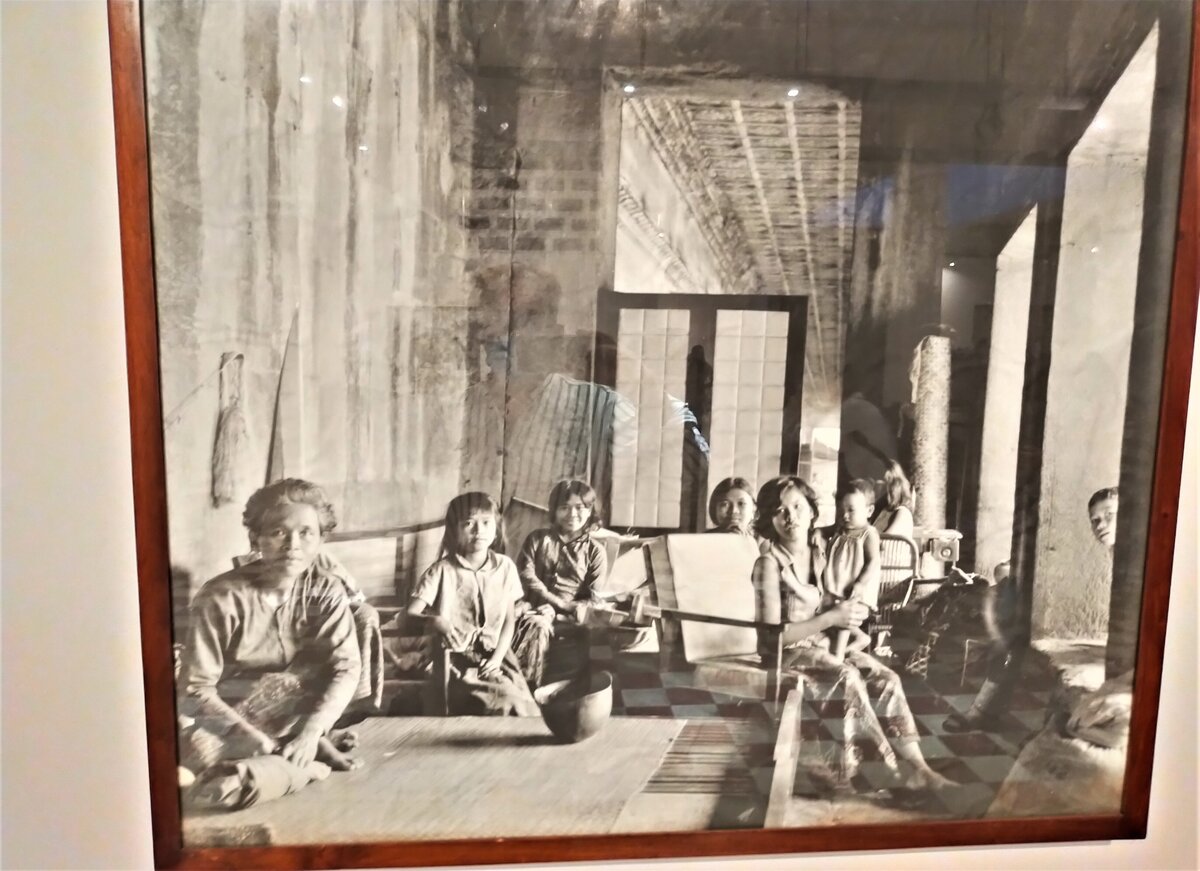
Published: 2021
Author: Jean Boulbet
Villagers cooking and doing their laundry around the pillared esplanades of Angkor Wat…these most unusual images were taken by explorer, ethnologist and geographer Jean Boulbet in the years 1970 – 1971.
The Bophana Center presentation gives us the historic background: “In March 1970, the Americans bombed northern Cambodia in order to destroy the Vietnamese forces taking shelter there. The large white banners which could be seen from the airplane were put there by UNESCO to prevent the Angkor site from being bombed. As a result, for around a year and a half, people took shelter in the main temples. For over five centuries, no one had lived at the Angkor sites. Measuring the exceptional and almost anachronistic character of this situation, Jean Boulbet, a map-maker for the French School of the Far East (EFEO), photographed and wrote about the daily activities of the new inhabitants in this historical site.”
“Beneath the Shadow of Angkor”, daily life of the refugees camping in the main temples of Angkor.
Photos by Angkor Database and Bophana Center.
The entire collection of Boulbet’s photos can be screened at Bophana Center.
Tags: Modern Cambodia, Indochina War, photography, refugees
About the Photographer

Jean Boulbet
Self-taught ethnologist, poet, archaeologist, botanist, geographer and cartographer, sociologist, linguist Jean Boulbet (2 Jan. 1926, Sainte-Colombe-sur-l’Hers, France — 11 Feb. 2007, Phuket, Thaïland), had extensively explored since 1946 the Cau Maa’ (“hill people” ethnic minority in Vietnam) territory when ethnographer Georges Condominas called him to take charge of the Angkor site forest conservation in 1963, thus helping in saving him from the South-Vietnamese jails.
While completing his studies in geography and ethnology, with a Ecole Pratique des Hautes Etudes EPHE certification in 1967 under the supervision of Lucien Bernot, Georges Condominas and Claude Lévi-Strauss, Boulbet — nicknamed ‘TaBeh’ (Granddad (Boul)Bet) by the Khmer people — established the first permanent scientific post in the Phnom Kulen area. After contributing to the cartography of Central Vietnam, Northern Cambodia and Southern Thailand, discovering several important archaeological sites such as Kbal Spean (the Thousand Linga River, in which his ashes would be scattered by his Cambodian spouse, Moey, after his death), becoming fluent in Khmer and minority dialects (stieng, mnong…), he was briefly captive of the Khmer Rouge militia in Battambang in 1975, and managed to escape to Thailand, where he first settled in Nonthaburi.
A “montagnard” himself — born and raised among the remote hills of Ariege –, a pioneer in fauna and flora preservation, Boulbet saved several endangered species and actively helped to the reforestation after the war.
His life has inspired French novelists such as Pierre Schoendoerffer (in L’Adieu au roi), François Bizot (Le Saut du Varan) and Loup Durand for his literary saga set in Cambodia, Jaraï.
Further references: One of his four grandsons from his daughter Laure (sired with his first spouse, a Cau Maa´ young woman), Danny Blao, has launched in 2012 a blog dedicated to Jean Boulbet.
Publications:
- “Quelques aspects du coutumier (Ndrii) des Cau Maa”, Bulletin de la Société des études indochinoises (Saigon), XXXII (2), p. 3 – 178, 1957.
- “Trois légendes maa’”, France-Asie (Saigon), 139, p. 399 – 402, 1957.
- “Découverte d’un troisième lithophone préhistorique en pays mnong-maa’”, L’Anthropologie, 62 (5−6), p. 486 – 502, 1957 (foreword by Georges Condominas).
- “Introduction à l’étude de la forêt dense”, Annales de la Faculté des Sciences (Saigon), p. 239 – 260, 1960 (with Jean-Pierre Barry, Phung Trung Ngân and H. Weiss).
- “Description de la végétation en Pays maa’”, Bulletin de la Société des études indochinoises (Saigon), XXXV (3), p. 545 – 574, maps, photos, 1960.
- “Bördee au rendez-vous des Génies”, Bulletin de la Société des études indochinoises (Saigon), XXXV (4), p. 627 – 650, 1960.
- “Modes et techniques du Pays maa’”, Bulletin de l’Ecole française d’Extrême-Orient (BEFEO), LII (2), p. 359 – 414, drawing, photos, 1965.
- “Le miir, culture itinérante avec jachère forestière en Pays maa’”, BEFEO, LIII (1), p. 77 – 98, photos, 5 maps, 1966.
- Pays des Maa’. Domaine des génies. Nggar Maa’, Nggar Yaang. Essai d’ethno-histoire d’une population
proto-indochinoise du Vietnam Central, Paris, Ecole française d’Extrême-Orient (“Publications de l’EFEO”, LXII), 152 p, photos, maps, 1967. - “Le tragique destin des Maa’”, Etudes cambodgiennes (Phnom Penh), n° 11, p. 14 – 21, 1967.
- “Phnom Kulen”, Etudes cambodgiennes (Phnom Penh), n° 16, p. 20 – 35, 1968.
- “Des femmes Bu Dih à quelques apsaras originales d’Angkor Vat”, Arts asiatiques, XVII, p. 209 – 218, 1968.
- “Le gibbon”, Nokor Khmer (Phnom Penh), I (1), p. 48 – 61, 1969.
- “Kbal Spean, la Rivière aux Mille Linga”, Nokor Khmer (Phnom Penh), I (2), p. 2 – 17, (foreword by Jean Filliozat), 1970.
- “Le décor forestier”, Nokor Khmer (Phnom Penh), II (3), p. 44 – 69, drawings by Hervé Manac’h, 1970.
- Dialogue lyrique des Cau Maa’, Paris, Ecole française d’Extrême-Orient (“Publications de l’EFEO”, LXXXV), 116 p., photos, 1972.
- Les Sites archéologiques de la région du Bhnam Gulen (Phnom Kulen), Paris, Annales des musées
Guimet et Cernuschi (numéro spécial Arts asiatiques, XXVII), 132 p., photos, cartes, 1973 (with Bruno Dagens). - “Phnom Kulen, paysage rural particulier au Cambodge”, p. 193 – 205 in Jacques Barrau, LucienBernot, Isaac Chiva and Georges Condominas (eds.), Agricultures et sociétés en Asie du Sud-Est, Paris, Mouton, 53 – 56, 1974.
- Paysans de la forêt, Paris, EFEO (“Publications de l’EFEO”, CV), 147 p., maps, photos, 1975.
- Phuket, Bangkok, Sangwan Surasarang, 47 p., cartes, photos (français-anglais), 1979 (repub. 1984).
- Le Phnom Kulen et sa région. Carte et commentaire, Paris, EFEO (“Textes et documents sur l’Indochine”, XII), 136 p., photos, maps, 1979.
- “Forest degradation in Northeastern Thailand between 1954 and 1973”, chapter 2: “Rural Landscapes“7, chapter 3: photos, in : Interim Committee for co-ordination of investigations of the Lower Mekong Basin. Lao People’s Democratic Republic, Kingdom of Thailand and Socialist Republic of Vietnam (eds) : Interpretation of Remote Sensing Imagery, mkg/R.231, 1979.
- Evolution des paysages végétaux en Thaïlande du Nord-Est, Paris, EFEO (“Publications de l’EFEO”, CXXXVI), 76 p., photos, 1982.
- “Découvrir ou retrouver. Autour des dernières prospectives de l’EFEO dans la région du Phnom Kulen (1967−1970)”, p. 165 – 181 in Cambodge II, Paris, Ed. de l’Ecole des Hautes études en sciences sociales [n. s. Asie du Sud-Est et Monde Insulidien, XV (1 – 4)], 497 p., 1984.
- Forêts et pays. Carte schématique des formations forestières dominantes et de l’occupation humaine en
Asie du Sud-Est, Paris, EFEO (“Publications de l’EFEO”, CXLIII), 134 p., maps, photos, 1984. - Un Héritage étrange : les roches peintes. Sites inédits de Thaïlande du Sud. Provinces de Phang Nga
et Krabi, Bangkok, Sangwan Surasarang, 36 p., cartes, photos (abstracts fr-thai-eng), with the support of French Ministry of Foreign Affaires, 1985. - Phuket. Réserve de faune et de flore de Khao Phra Thaew, Phuket, Andaman Press, 80 p., maps,
photos (fr-eng-thai), 1986 (with Nophadol Briksavan). - Phuket. Image satellite Spot et son exploitation de terrain. Six panneaux commentés, Toulouse/
Paris/Bangkok, Centre national d’études spatiales, EFEO, Asian Institute of Technology, 1988. - Vers un sens de la Terre. Recul des lisières de la forêt dense en Thaïlande méridionale durant les deux
dernières décennies / Towards a sense of the Earth. The retreat of the dense forest in Southern Thailand
during the last two decades, Pattani, Prince of Songkla University (“Grand Sud”, 5), with EFEO, 138 p., maps, photos (fr-eng), 1995. - De Palmes et d’épines, Tome 1, Vers le Domaine des génies (Pays des Maa’, Sud Vietnam, 1947-
1963), Paris, SevenOrients, 345 p., 32 pl. photos, maps, 2002.
De Palmes et d’épines, Tome 2, Vers le paradis d’Indra (Cambodge, 1963 – 1975), Paris, Seven -
Orients, 221 p., 32 pl., maps, 2003. - “Du mythe à la parure. L’oiseau chez les Cau Maa’ (Vietnam)”, p. 695 – 716 in P. Le Roux & B.
Sellato (eds.), Les Messagers divins. Aspects esthétiques et symboliques des oiseaux en Asie
du Sud-Est/Divine Messengers. Bird Aesthetics and Symbolism, Paris/Bangkok, Connaissances et
Savoirs and SevenOrients/IRASEC, 862 p., 2006. - De Palmes et d’épines, tome 3, Vers le port d’attaché (Phuket, sud de la Thaïlande, 1975-
2007), Paris, SevenOrients, 214 p., 98 maps and photos, 32 pl., 2009 [posthumous edition augmented and edited by Pierre Le Roux].
[bibliography by Pierre Le Roux in Jean Boulbet, De Palmes et d’épines, tome 3, 2009, digitized 2021)

